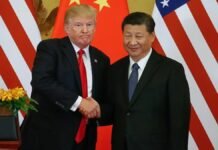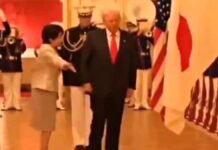
Key Points
- Major Tariff Announcement: President Donald Trump has imposed a sweeping 30% tariff on all goods imported from Mexico and the European Union, effective August 1, 2025.
- Trade Talks Collapse: The move follows the breakdown of zero-tariff negotiations between the US and EU, with internal EU divisions stalling any agreement.
- Wider Tariff Strategy: The US recently slapped a 50% tariff on copper imports from Japan, South Korea, Canada, and Brazil, signaling a broader protectionist push.
- Economic Fallout: While the US Treasury has gained over $100 billion from customs duties so far this year, experts warn of rising global trade instability, inflation, and strained relations with key allies.
- America First Policy: Trump frames the tariffs as vital for protecting US industries, but the decision risks escalating trade wars and undermining long-standing partnerships.
Washington D.C.: In recent months, the US and the European Union engaged in high-stakes negotiations aiming for a zero-tariff agreement on industrial goods. While Germany and some EU members supported the deal, France and others resisted, citing concerns that the US proposal disproportionately benefited American interests. With no consensus reached after prolonged discussions, the talks collapsed, prompting the US to act unilaterally.
The Tariff Details
On Saturday, President Trump formally notified both the EU and Mexico via official letters and social media of the new 30% tariff on all imported goods. This measure is set to take effect from August 1, 2025, and is expected to impact a wide range of products, from automobiles and machinery to agricultural exports.
Table: Recent US Tariff Actions
| Country/Region | Product(s) Affected | New Tariff Rate | Previous Rate |
|---|---|---|---|
| Mexico, EU | All goods | 30% | Varied |
| Japan, S. Korea, Canada, Brazil | Copper | 50% | Varied |
Treasury Gains, Global Risks
According to official US government data, the aggressive tariff regime has already generated over $100 billion in customs revenue by June 2025. However, economists caution that the short-term fiscal boost comes at the cost of higher prices for American consumers and businesses, potential retaliation from trade partners, and increased volatility in global markets.
Allies React: Setback and Search for Solutions
The EU, caught between internal divisions, is now scrambling for an interim solution to protect its industries. Germany has called for renewed dialogue, while France and other skeptical members warn against making further concessions to Washington. Mexico, a major exporter to the US, has hinted at reciprocal measures and is seeking support from other affected nations.
Analysis: What Does This Mean for Global Trade?
- Rising Protectionism: Trump’s “America First” approach marks a sharp turn from decades of free trade advocacy, risking a domino effect as other countries consider their own tariffs.
- Inflation Concerns: Higher import duties are likely to drive up prices for US consumers, adding to inflationary pressures already felt worldwide.
- Strained Alliances: The decision threatens to widen rifts with traditional allies, potentially undermining cooperation on broader economic and security issues.
- Market Uncertainty: Investors and multinational companies face increased uncertainty, with potential disruptions to supply chains and investment plans.
President Trump’s imposition of a 30% tariff on imports from Mexico and the European Union is a watershed moment for global trade. While the move may bolster US Treasury revenues and protect certain domestic industries in the short term, it raises profound questions about the future of international cooperation, economic stability, and America’s role in the world economy. The coming months will reveal whether this bold tariff gamble pays off or triggers a new era of trade wars and global uncertainty.



















































